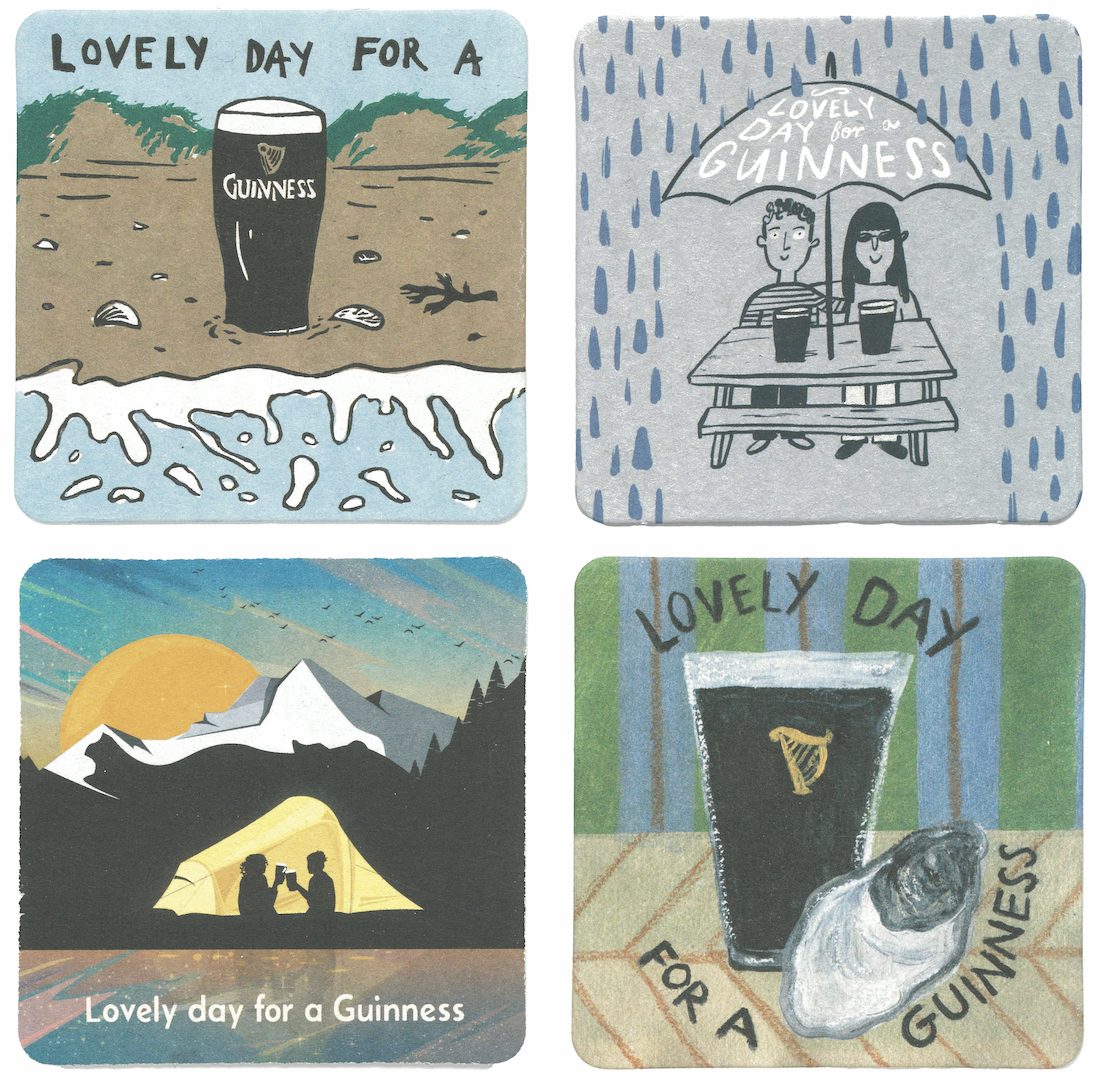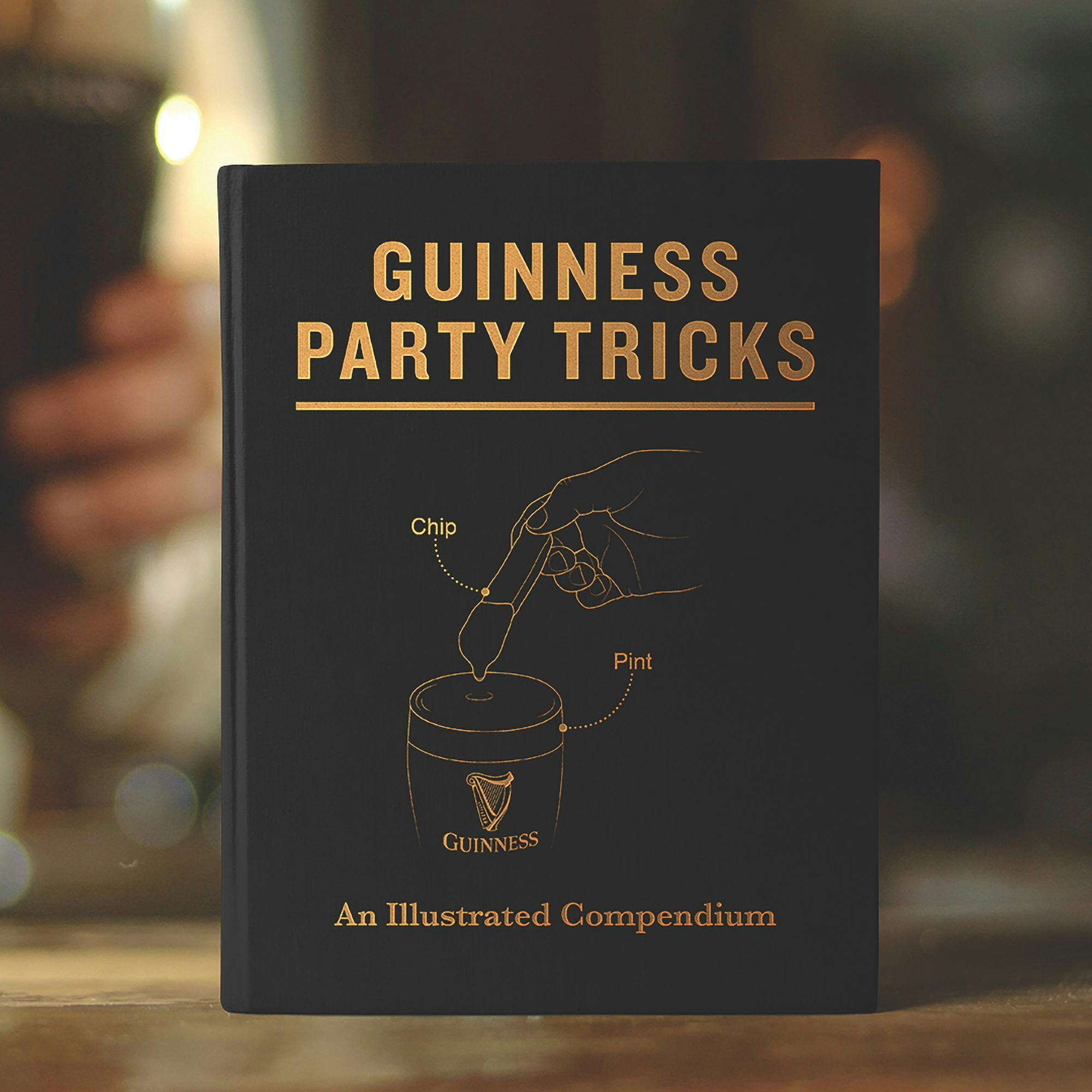How Guinness embraced social
By loosening its approach to advertising, and engaging with its audience directly, the drinks brand has transformed with the times and won a whole new set of fans
At the beginning of last year, as part of its first-half fiscal results, drinks multinational Diageo announced that Guinness was officially the UK’s most popular pint, accounting for one in every nine served in pubs. As one of illustrator John Gilroy’s classic mid-century posters might have put it: ‘Guinness is Everywhere.’
Founded in 1759, the brand has been advertising for nearly 100 years, with agency AMV BDDO at the helm over the last 26, and while the distinctive ‘black stuff’ has remained largely unaltered, the perception of Ireland’s most famous export has changed hugely over that time.
From the aforementioned posters with their range of health-benefit taglines (Guinness is Good For You, 1929), through to game-changing, cinematic TV ad campaigns with thumping soundtracks (Surfer, 1999), the 2020s have seen social media move the brand beyond its traditional channels and into the consumer-led playpen of co-created content towards whole new audiences.

While few drinks brands have the heritage to devote a section of their website solely to their own advertising, as Guinness does, it’s this recent exploration of the community-focused aspect to enjoying a ‘pint of plain’ that has helped maintain the brand’s position as one of the most recognisable in the world.
It’s a story of transformation that was explored at the Cannes Lions festival in June. Diageo’s Grainne Wafer (previously global brand director of Guinness and now global category director of beer, vodka, liqueurs and convenience), and Callum McCahon of social media agency Born Social, spoke about how the Guinness brand has been “reignited” in recent years, evolving in a way that enables it to thrive in new environments while staying true to its founding principles.
The success across the brand’s markets is the result of an intentional strategy, Wafer claimed, in pursuit of “the top tier of growth”, which has meant competing with the fastest-growing beer brands in the world. As Wafer outlined, the late 2010s saw huge change for both consumers and Guinness as a business.
For a brand built on a longstanding history of epic broadcast work, it was entering new territory, as its audiences spent more time on digital and social platforms, but drinking culture was changing too. More consumption was taking place at home, while the need to reach a broader, more diverse audience (moving away from a distinctly masculine perception), was in keeping with wider societal change.
“Our business was feeling it,” Wafer spelled out. “We had become an ageing brand, primarily drunk by men, on singular occasions. We were seen as out of touch in our big markets [of] Great Britain and Ireland … and we were operating in an increasingly competitive marketplace, against the rise of craft [beer] and the premium European lagers.”
To put it bluntly, Guinness had ceased to be a drink that anyone could enjoy. “It was struggling to recruit a younger, more diverse, more female generation of drinkers, who represented our path back to growth.” Guinness had to adapt and McCahon said that recognising that social media was the lead channel for the particular audience they were targeting (18-34) was a key step. “They consumed media very differently, but they also held a very different set of values and behaviours,” he said.

But a recognition of changing attitudes – and a Guinness aesthetic to reflect this – had been happening for a while, just not necessarily online. The reset came in 2014, when Diageo appointed AMV BBDO and Network BBDO Johannesburg to the Guinness Africa account. Nadja Lossgott and Nicholas Hulley, chief creative officers at AMV, took over Guinness’ ongoing Made of More platform. “Our vision was to inject humanity, authenticity and beauty,” Lossgott recalls. “We also set out to broaden its appeal away from a traditional masculine, on-a-pedestal view of the brand.”
Made of More really came into its own with the Sapeurs TV spot, directed by Nicolai Fuglsig, which aired in January 2014 (for context, Instagram had only introduced its video-sharing functionality six months before). Featuring the super-stylish men of Brazzaville, Republic of Congo, vibrant colours replaced the dark, brooding Guinness palette of old, while the story itself inverted traditional notions of masculinity.
We moved from a single-occasion brand, only drunk by specific people in a specific place at a specific time, to inviting experiences, everywhere
The men who laboured at various blue-collar jobs during the day became flamboyant dandies in fine clothing, exuding poise and dignity. “Creatively we kept coming back to the purity of telling a more human story,” Lossgott explains, “and the most human way to show ‘made of more’ in an interesting, as ‘only Guinness could’ way happened to be the story of the Sapeurs. It showed the human qualities of being extraordinary in the way the Sapeurs live their lives and had a universal message anyone could relate to, no matter who you are or where you live.”
Lossgott believes “that [the] energy of Sapeurs acted as a springboard for Guinness and injected more meaning into the brand platform. Authenticity, humanity and standout visuals are always a key for the brand, for its talkability, its cultural relevance, and therefore it is something we always strive for, whichever medium we communicate in.”
Viewed this way, Guinness’ social media presence inherited a desire to communicate the brand’s authenticity and stand out – yet the approach to using these platforms shifted massively over the coming years as the technologies developed. And then, in the middle of all this, the pandemic happened.
Mark Ritson, writing for Marketing Week soon after Guinness achieved its most popular pint crown in 2023, noted that, as lockdown struck across the UK in 2020-21, the brand tapped into two insights by using social listening. “First, with bars and restaurants closed, the desire for a decent pint grew exponentially with every passing week for many people locked in at home. And Guinness, which often features high up the drinking desire list when consumers have a proper thirst, was a product that lockdown consumers longed for more than most.
“Second, at a more micro level, the Guinness team began to observe the manifestation of this unsatiated desire as people posted images from their pandemic lives that resembled a pint of Guinness. This tiny trend, which eventually evolved into #LooksLikeGuinness, became a crucial input into the campaign that was to follow,” said Ritson.


“A brand has to constantly evolve and bring in new people, and Guinness is no different,” says Hulley. “A massive shift was how we chose to come out of the pandemic, which helped create the reignition of the brand. AMV and Guinness devised the strategy to be the beer that everyone thought of when lockdown ended and we were all able to go back to a pub. And the insight of seeing the simple, abstract, iconic and loved pint everywhere, in everything, was created and activated in every space. It went viral and fuelled a surge of optimism and playfulness. It was extremely successful and paved a way for how the brand can behave.”
This was a new way of thinking about Guinness’ key brand assets. In moving away from only focusing on epic TV ads, the brand doubled-down on social content and embraced the ways in which consumers were sharing images of the product, “partnering with creators and communities to tell the Guinness story”, said McCahon.
We embraced the idea that distinctiveness doesn’t have to mean micromanaging every single touchpoint. Essentially, we democratised our distinctiveness
“We moved from perfection and prescription – ‘You can only drink Guinness in a certain way’ – to being much more playful with our beer, breaking the rules that we had previously held so close, opening up the product to a new generation of drinkers. We moved from a single-occasion brand, only drunk by specific people in a specific place at a specific time, to inviting experiences, everywhere.”
For Lossgott, social listening is about being able to take things that are bubbling up on social media and turn them into uniquely Guinness content. “For St Patrick’s Day, we saw how people were blowing into their pints and turned it into the hugely popular Singing Pints campaign for Guinness 0.0. It was the social chatter of the Irish public hoping to break their quarter final curse that led us to Don’t Jinx It. And at Christmas, we added to the conversation with Footpints, a fun, whimsical idea that delighted our audience. At the heart of this work are big ideas that are platform-neutral and built from a conversation between Guinness and the people who love it.”
There is a balance to get right between Guinness’ heritage and the world of user-generated content and co-creation, where exploration of the brand’s assets is far less controlled by the brand. “We embraced the idea that distinctiveness doesn’t have to mean micromanaging every single touchpoint,” McCahon revealed. “Essentially, we democratised our distinctiveness. We embraced more lo-fi forms of craft, we loosened up on our tone of voice, and we became much more collaborative with creators.”
Concluding their talk at Cannes Lions, Wafer said the transformation had taken Guinness “from a brand known only for epic creativity, picture-perfect serves, and singular occasions to a community-led brand that champions a more inviting product for a broader range of inclusive moments.”
As audiences and technologies inevitably change and evolve, the challenge for Guinness is how to continue to balance heritage and newness. “Remember that your core brand principles keep you anchored,” McCahon said, “but they can always be reimagined to bring them to where audiences are.”




